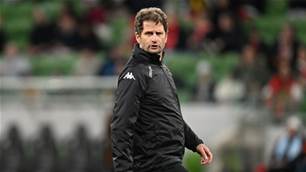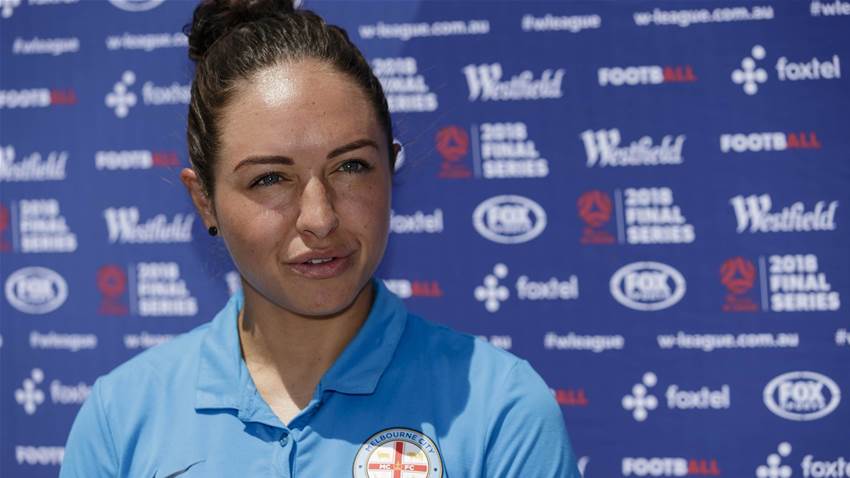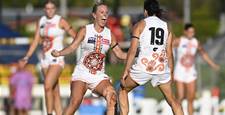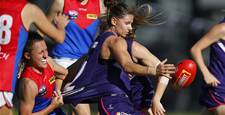This month, the W-League will celebrate its 10-year anniversary. It’s been a journey of ups, downs, triumphs and frustrations, with Kyah Simon being there since the inaugural season.
She now reflects upon the growth of the league along with the depth of talent and reverence it now possesses.
Matildas star, Simon began her W-League career with the Central Coast Mariners as a 16-year-old and says she can’t believe how quickly time has passed since she first set her foot on the pitch of the very first game in 2008.
“It’s crazy to think we’ve already gone through 10 seasons,” she said.
“I remember going all the way back to season one when Tom Sermanni was the head coach of the Matildas.
“Back then it was a case of splitting up the Matildas to try and make the W-League as evenly competitive as possible,” the 27-year-old continued.
 When the W-League first began, it was the first professional football league for women in Australia since the 2004 Women’s National Soccer League and was implemented after the Aussie women qualified for the quarterfinals of the 2007 FIFA Women’s World Cup.
When the W-League first began, it was the first professional football league for women in Australia since the 2004 Women’s National Soccer League and was implemented after the Aussie women qualified for the quarterfinals of the 2007 FIFA Women’s World Cup.
That historic moment proved to the nation that a professional league was imperative to developing female players and giving Australia it’s best shot at building a women’s league they could be proud of.
“Fast-forward to the 11th season and the entire league is now bursting at the seams with talent and competitiveness,” Simon said.
“It’s only a 14-week season but giving young kids the opportunity to now come out and support their favourite team or player is really special. It’s really given the Australian public a platform to see what Australian women’s football is all about.
“You see men’s football everywhere and the ease of accessibility gives the public so much access to support it, but there had never been that platform for Australian women’s football until the W-League and the Matildas,” she continued.
Things are different these days, with the Matildas currently ranked sixth in the world and the W-League attracting internationally renowned players from all over the globe.
“Today, you could speak with any W-League club and I’m sure they could each relate to having to turn away a fair few international resumes, due to huge interest and limited spots, which says a lot about how far the league has come,” Simon said.
The Quakers Hill Juniors alumni played in the very first W-League game on 25 October 2008, when Central Coast Mariners took on Melbourne Victory. She said that at the time, she had no idea what that first step onto the pitch would mean for not only the league, but the women’s game as a whole.
“The first time I played in the W-League, I would’ve only been 16 or 17, so my initial reaction was just pure excitement. I remember it was the first time in a long time that we were able to play in a professional women’s league in Australia,” she said.
“At the time, I didn’t realise the enormity of what we were starting. Looking back now and realising how huge that year was, I wouldn’t have been able to predict where it would be ten years later.”
As for how she feels about being able to witness and play a part in the decade-long growth of one of Australia’s most successful leagues Simon said:
“It’s such a proud moment for myself and all those players who played during that very first year and have continued to play over the last 10 years."
“We’ve been able to play a part in history and helped in growing a stable, competitive and enjoyable league.”
One fact that some football fans may not know, is that in the beginning, their footballing heroes played the beautiful game for free.
It has only been of late that female players have started to be remunerated for the hard work they dedicate to their craft and country.
“It’s a hard thing for people to be able to put into perspective - what the more experienced players had to sacrifice just to get the league off the ground. We actually played for free,” Simon said.
“Football is much bigger and much more than money. When you get down to the core of why you play, it’s never for money, you play because you genuinely love the game and you’re passionate about its growth, but at the end of the day, we are professional athletes and need to make a living,” she said.
In 2017, the W-League introduced a Collective Bargaining Agreement (CBA) for the first time.
The CBA ensured that all players received a minimum wage and protection in the way of income and healthcare along with an increase in investment in both team salary cap and minimum league spend.
“The changes that have come into effect, like the CBA are huge,” she said.
“That’s the reason we and those who played before us, made those sacrifices, to get to where we are now.
“I’m really pleased and excited for where the League is, but there is still so much room to improve and keep following that upward trajectory.”
As for her hopes for the next 10 years of the W-League, Simon said she wants the league to continue to grow and become world renowned.
“As players within the W-League, we want to be known as a league that is competitive and is one of the best in the world,” she said.
“We want to see the league continue to expand in the way of exposure and promotional interest. We want to continue to attract international players who are drawn to playing in Australia because of the reputation of the W-League.
“Our ultimate goal is to grab not only the attention of Australia but the world.”
Related Articles
.jpg&h=172&w=306&c=1&s=1)
Matildas' Kyah Simon among four to depart ALW Mariners

'Timing not right': Montemurro's verdict on Matildas vacancy
.jpg&h=172&w=306&c=1&s=1)












